The popularity of Starlink Roam has soared among RV owners, van dwellers, and other kinds of travelers. Having access to high speed internet is an important part of our daily lives in 2024. With Starlink, that’s now possible almost anywhere in the world.
If you are taking Starlink with you, it is important to keep the hardware protected. That’s where Starlink cases come in. With the right case, you can easily store your dish so that it stays protected while traveling. When it comes time to set it up, everything is organized and easily accessible.
In this article, I will be reviewing an official Starlink accessory – the Starlink Travel Case. I’ll show you how it’s used, share my impressions of the case, and tell you if I recommend it. I will also provide recommendations for 3rd party case alternatives.
Table of Contents
Official Starlink Travel Case
I recently started bringing my Starlink Roam system with me on my camping trips so that I could do a bit of work, and enjoy movies in the evenings. I have a 13 ft. Scamp travel trailer. I’ve looked into building my own case, but never got around to it. Instead, I would just stuff my Starlink in a storage cabinet in the travel trailer.
That’s worked fine so far, but I always worry about damaging the dish, or leaving something behind. So I decided to purchase a storage case to protect my investment.
The Starlink Travel Case is an official accessory from Starlink, so I decided to try it out. It fits the Standard hardware perfectly, includes backpack straps, and has a hard shell exterior. I bought it directly from the Starlink shop for $250.
It measures about the size of a carry on luggage case – 25.5″ x 17″ x 13.25″, and weights less than 10 lbs. empty. The Starlink Travel Case should fit into most airplane overhead bins.
Video demonstration
Note: Some ad blockers will block our video player. If you don’t see the video, try disabling your ad blocker, and then reload the page.
Using the case
The Starlink Travel Case has a single compartment, accessed with a zipper. A rigid foam partition has places for a complete Starlink kit, including the dish, stand, router, and cables.
Starlink includes an instruction sheet that shows how to pack everything inside the case. The router goes in first, followed by the stand. The cables go in next. A protective layer flips down, and the dish lays on top. Then you just zip the case shut.
For transporting and moving the case, there are 2 handles, and also backpack straps. One of the handles is on the the long side, the other is on the shorter side, allowing you to carry it in any orientation. The backpack straps are on the top of the case. The top of the case is also padded, so that it’s comfortable when using the backpack straps.
When it is time to unpack, unzip the case, and take everything out in reverse order from when the case was packed.
My impressions and review
My first impression when opening the box was that the Starlink Travel Case is really a backpack that can double as a storage case. The backpack straps and padding are not removable. This case can be carried with the two handles, but it’s really meant to be a backpack case.
The outer shell is made from a strong but flexible plastic. It’s strong enough to protect the dish from damage during transport, but flexible enough to avoid dents and cracks if the case moves or falls in transit. The exterior is nicely textured. Not only does it look and feel great, the texture helps the case avoid scuffs and scratches from loading/unloading.
The inner foam section reminds me of a very thick and rigid styrofoam. It doesn’t chip easily, and holds all the components in tightly. All sides of the case have at least an inch of foam protecting the contents. Starlink even includes a fabric divider that isolates the dish from the rest of the kit. It helps the dish to avoid any scratches from the mount. They also include some pouches for the Starlink cable and router power cord.
The handles and backpack straps are built well. There is a surprising amount of padding on the shoulder straps and “top” of the case where your back rests. I found it completely comfortable to walk around for a bit with the Starlink Travel Case completely loaded up. The handles are made from a mix of rubber and plastic. They are flexible enough to take some abuse, but strong enough to confidently carry and move the case with ease.
One big concern I had with this case is whether or not it’s waterproof. On the website, Starlink doesn’t mention that it’s waterproof. But after getting my hands on the case, it’s clear that the case and zipper system are designed to be water resistant. The zipper has a rubber seal, and the exterior shell won’t absorb water. The Starlink Travel Case won’t keep water out if it’s dropped in a lake, but it is resistant to rain and other water spray you may encounter while transporting the case.
Would I recommend it?
$250 is a lot to spend on a storage case, but I feel that the Starlink Travel Case is worth it overall. It’s light but strong, easy to carry around, and fits all the Starlink hardware in a single compartment. While not technically waterproof, the case is water resistant. I feel that it could withstand rain and dust without any issues.
So overall, yes, I would recommend the Starlink Travel Case to anyone looking for a storage and transport solution for their Starlink Roam kit. Compared to similar 3rd party cases, the official Starlink option is usually cheaper, but lacks some features. I think this case does what most people need it to do. If you need something tougher, I have some recommendations in the next section.
Other Starlink cases to consider
If you don’t like the backpack feature of the Starlink case, or you need something more heavy duty, here are some other Starlink case options to consider.
Note: This article may contain affiliate links for the products mentioned
Radius Outfitters Starlink Storage Case
The most premium Starlink case on our 3rd party alternative list is the Radius Outfitters Starlink Storage Case. Radius Outfitters is a US-based company that makes all sorts of storage and organization gear, mainly targeting vans and other kinds of adventure vehicles. They pride themselves on being an engineer-led team, focusing on quality design and functionality. Their Starlink Storage Case is pre-assembled with a custom foam insert, designed for a Gen 2 Starlink Standard kit.
The case is constructed with a variety of high quality materials. The main shell is made of Cordura, which is a common material for luggage bags. You’ll also find nylon, and even leather, throughout the case. Inside, a foam insert has cutouts that fit the various Starlink kit components. The foam insert is removable, and Radius Outfitters even includes extra dividers. That means you can use this case for other tasks when you aren’t using it for Starlink.
For more details and pictures, check out our full review.
Use promo code HOLIDAY15 for 15% off Radius Outfitters gear
Pelican 1610 Case
The Pelican 1610 Case is a long time favorite of the Starlink community. Before the official Starlink case, many people were buying the Pelican 1610 and modifying it for use with Starlink. It has a Polypropylene shell that can withstand drops. The case is watertight, so you won’t have to worry about the outside elements getting inside.
It has plenty of handles, and also wheels, to make transporting the case very easy. The case comes with foam inserts that you can cut to create a custom fit for your Starlink kit. That’s about the only downside compared to the official Starlink case. It does require a little bit of DIY.
Budget DIY option
If you don’t want to spend a ton of money on a Starlink case, consider a DIY approach. By combining a cheap storage tote with some cubed foam, you can make a custom protective case. You may even have some kind of storage container laying around that you can use, and just purchase the foam instead. For under $100, this is a great budget option.
To get you started, I’ve selected the CX 17-Gallon Tough Storage Container, pictured above. Then all you need is the cubed foam. You can use almost any foam, but cubed foam is very easy to shape into anything. The foam pictured above is a good place to start.
There are several tradeoffs with this option. The storage containers aren’t as tough or impact resistant as other cases. And not all storage containers are lockable or water resistant.
Final thoughts
If you take Starlink with you for traveling or work, it’s important to protect your investment with some kind of transport/storage case. Starlink has their own backpack case, which I can recommend after reviewing it myself. But there are also some 3rd party alternatives that are cheaper or more heavy duty if that’s what you need.
What do you use to transport your Starlink kit? Do you have any recommendations for other readers? Let us know in the comments below!

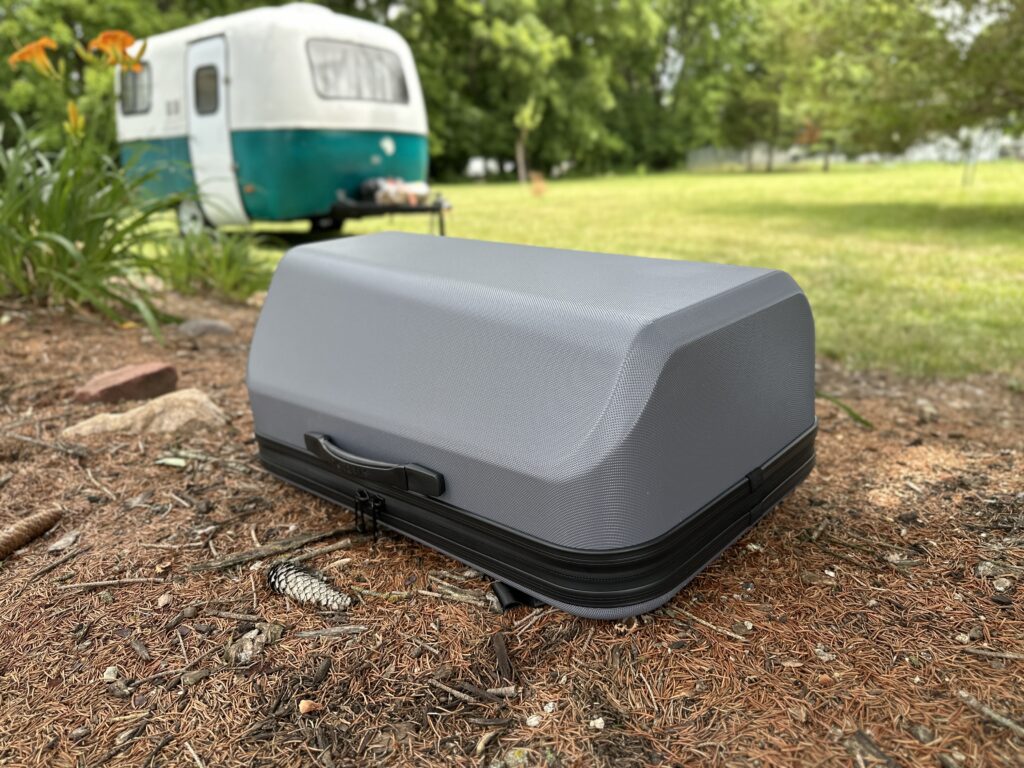
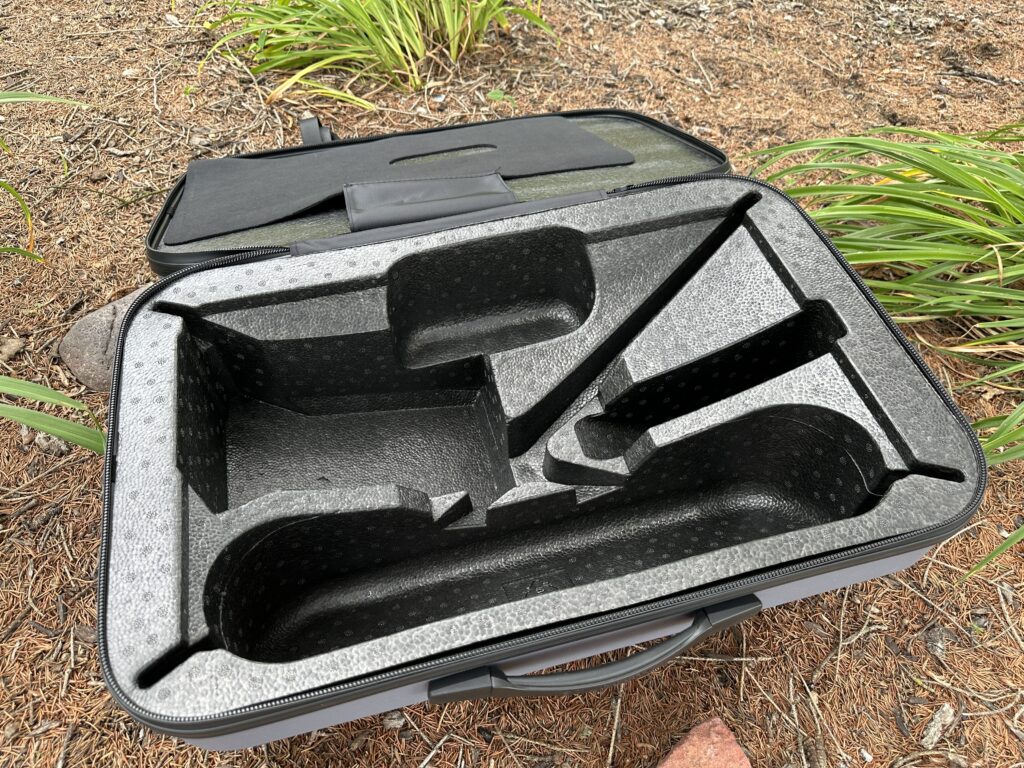
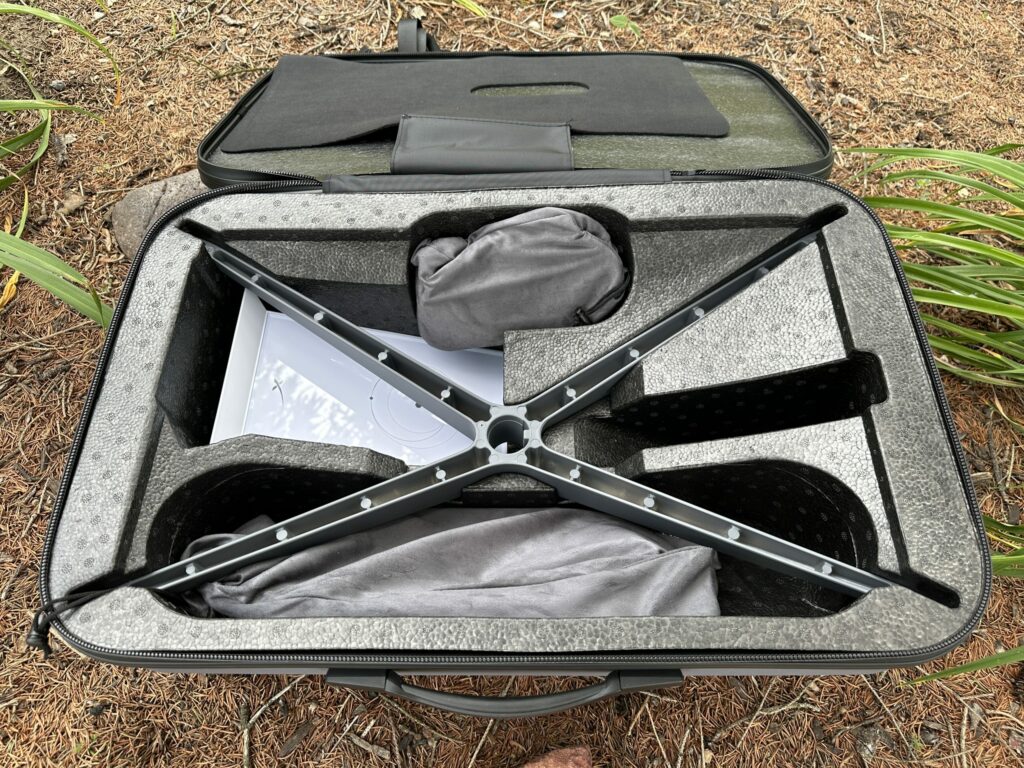
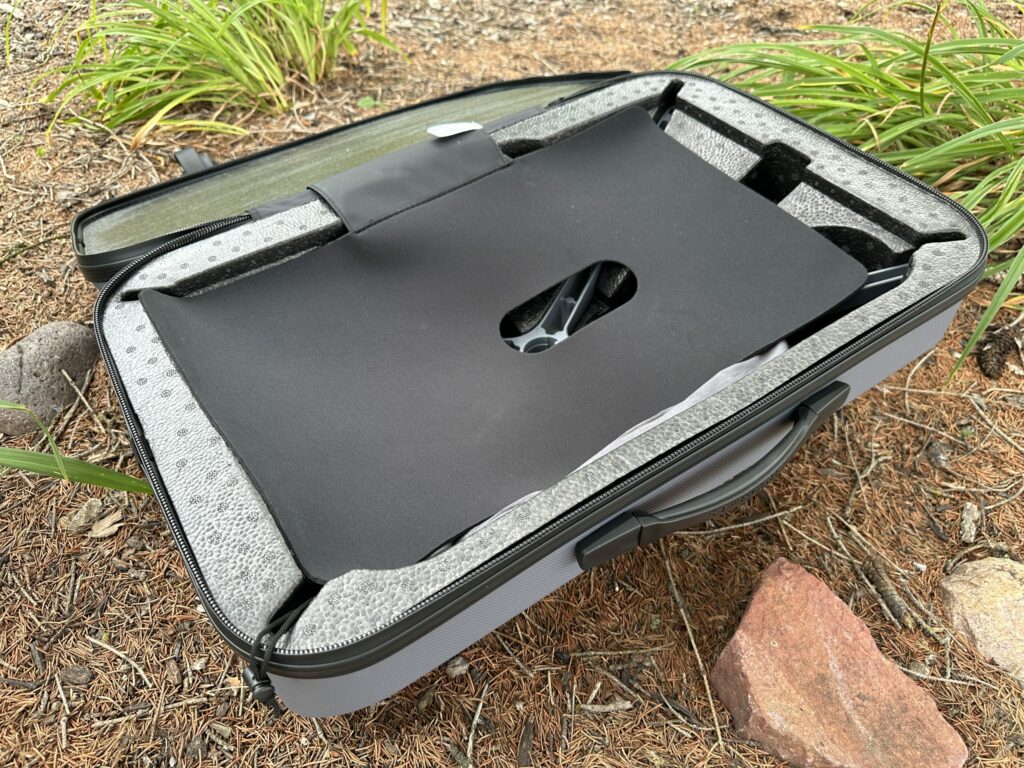
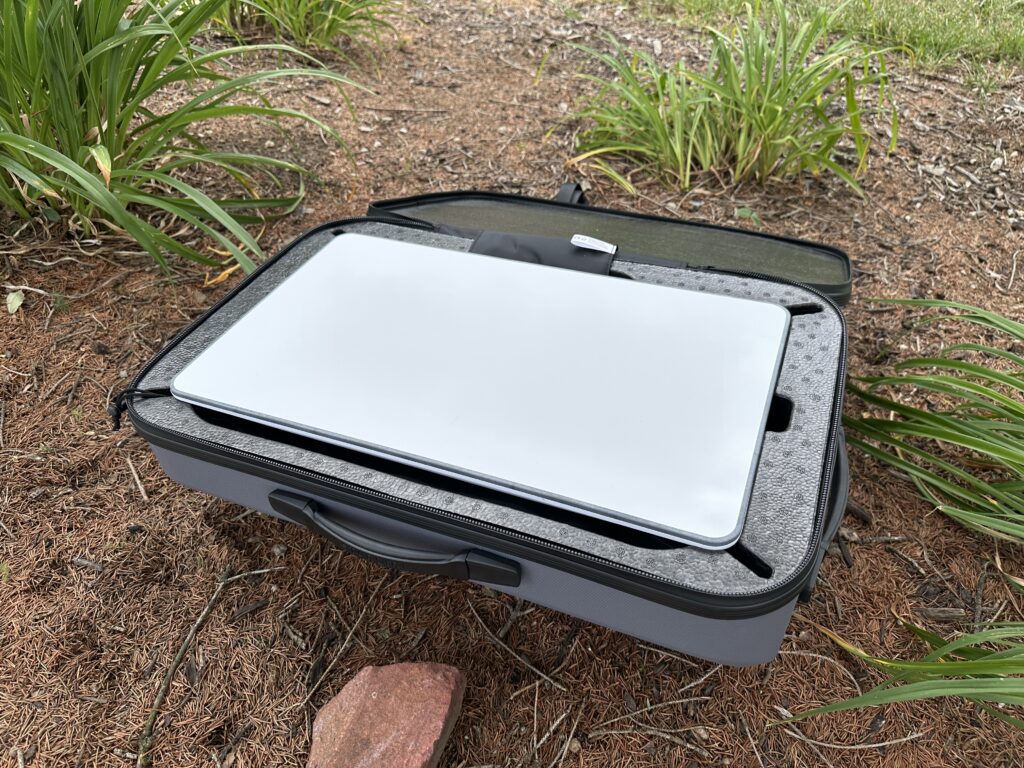
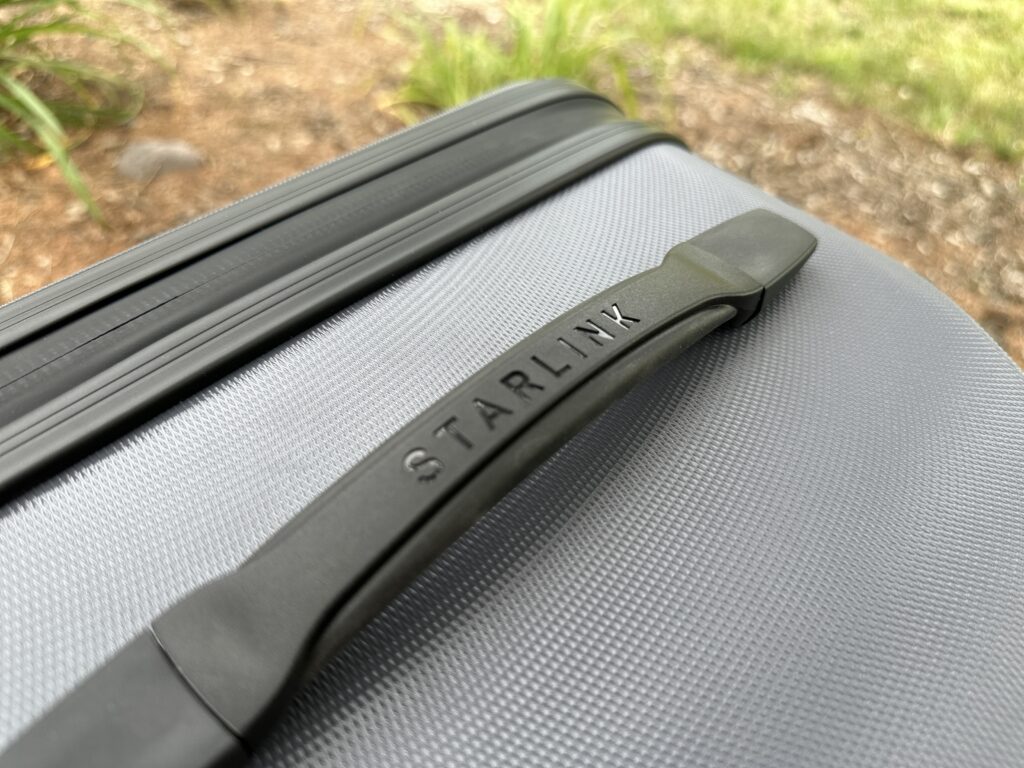
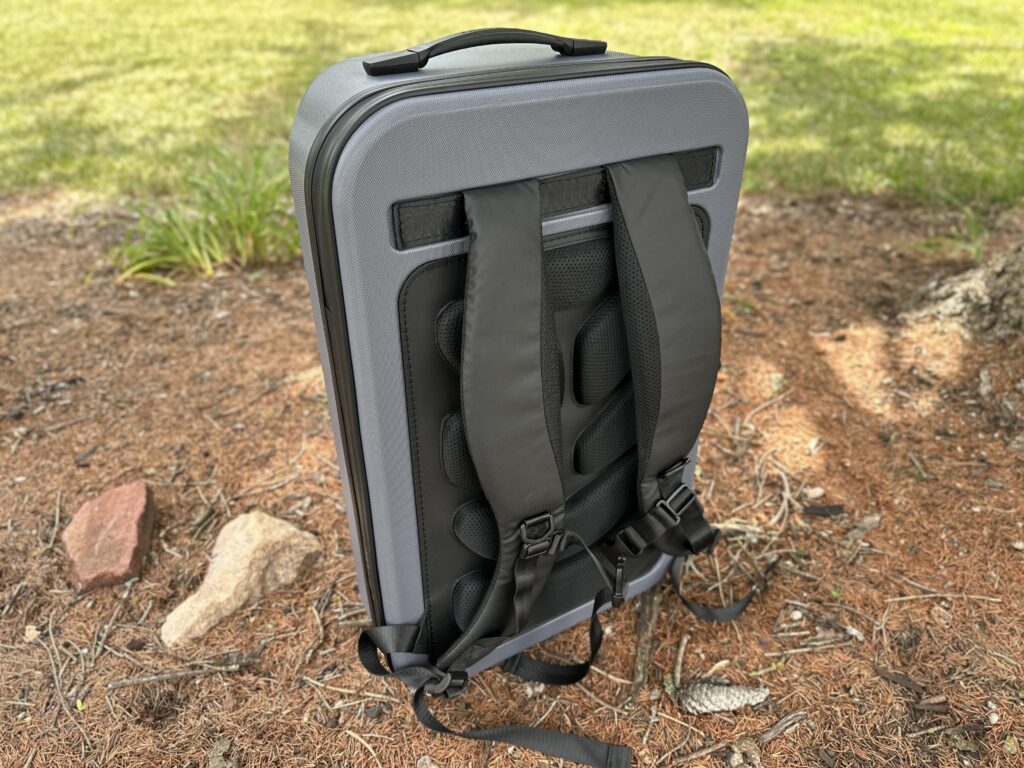
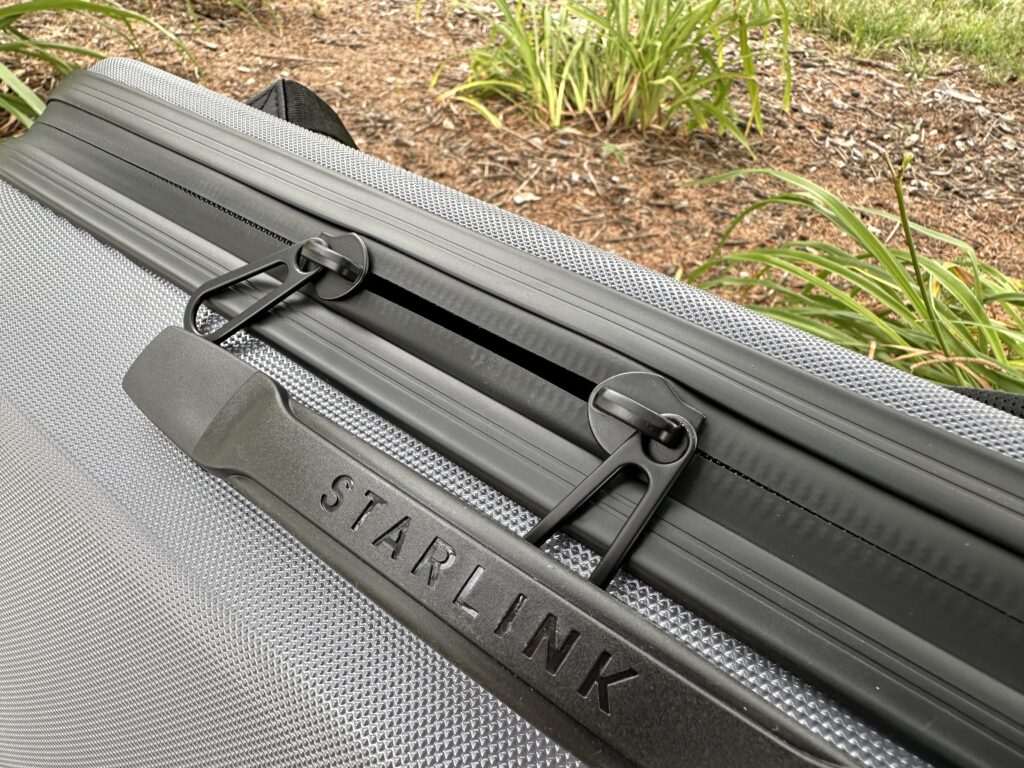
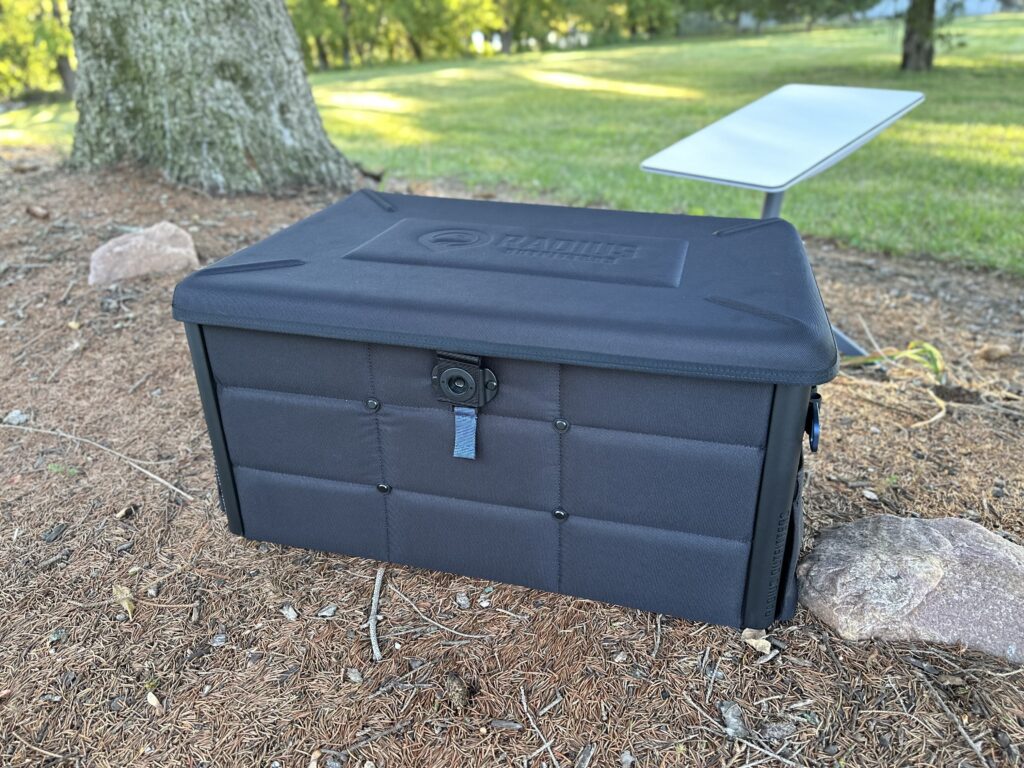

![CX BLACK & YELLOW®, 17-Gallon Heavy Duty Tough Storage Container & Snap-Tight Lid, (12.5”H x 18”W x 26.9”D), Weather-Resistant Design and Stackable Organization Tote [2 Pack]](https://m.media-amazon.com/images/I/31SvPoXuBVL.jpg)

Have you tried to the airplane? Do they let you to take it with you on the cabin?
It should fit on most airplanes as carry on, but double check the dimensions with your airline prior to flying to be sure.
Looks like a great solution for both storage and travel. One thing I wish it had was an accessory pocket for a slim laptop; is there anywhere in the bag to fit in a slim 14″ laptop, without damaging anything or it sliding around?
I use a 35 gallon husky water proof/tight storage tote fromhomedepot. I use the original packaging for the stand and the dish. My modem stays in inside the RV when traveling. Works outstanding.
I still use the original box from when it was shipped to me. Possibly use it as a pattern to cut out foam one day. The convenience of this one seems great, but at $250, I have resisted so far. The top reason to buy is probably convenience (it is small and well designed) and weight. If you have a need to backpack, it’s the obvious choice.
I want to buy this but I can not find it on the starlink site. I used the link on the page here but it goes to my billing. I found the SHOP button in the hamburger menu on the front page of starlink but it also directs straight to the same billing page….am I doing something wrong? or is it not available any longer?
If the direct link doesn’t work, it means it is not available in your market.
In regards to the info above about fitting into most airplane overhead bins, Does this info apply to the Rectangular Starlink kit? I’m going to be traveling in a few weeks and would like to use this as a carry on.
Yes, all the cases above are for the Standard (rectangular gen 2) kit.
Thanks for doing this review ! Very helpful. One question, on the dimensions listed, which is the height ? Height as pictured in your very first pic with the scamp in the background, the case laying straps down.
It’s about 12 inches tall at the highest point when it is laying down (like in the picture).
These cases are absurd. They price from almost half to almost twice the cost of the dish/router itself which is beyond stupid. The box it comes in is 24” x 14” x 10” and I’m guessing weighs about a pound. Smaller and lighter than any of the cases. As far as waterproofing goes, any reasonably stretchy 13 gallon kitchen trash bag fits nicely over the box.
Using the box and some type of waterproof cover is a great budget idea!
hey Noah,
SavageATV’s Starlink “On the Go” case is a solid alternative too.
https://www.savageutv.com/collections/starlink-storage/products/starlink-on-the-go-case?variant=40169148809259
cheers